1. Discord
2. Instructor
2.1. Jason Leigh
2.1.1. [email protected]
2.1.2. Office Hours
2.1.2.1. W 1-3pm (except when there is really good surf- kidding)
3. Class Location & Time
3.1. Look at Laulima Announcement.
3.2. W 3:00-5:30p
3.3. Keller 103
4. Class Schedule
5. Materials/Supplies Needed
5.1. Your own laptop
5.2. Your own copy of Unity3D (free)
5.3. Your favorite 3D modeling tool (e.g. Maya, Blender)
5.4. SAGE3
5.5. Audacity (free)
5.6. Black medium felt pen
5.7. Bleed proof drawing pad
6. Grading
6.1. Project 1 (30%)
6.1.1. Every student will develop a simple game with the following criteria.
6.1.1.1. Purpose of the assignment is to learn to use the tools (Unity, Blender/Maya, Audacity)
6.1.1.2. You have to be able to move the game character around the screen with your keyboard or game controller
6.1.1.3. Obstacles for you to avoid
6.1.1.4. Objects appear on the screen that your character has to collect
6.1.1.5. When an obstacle or object touches your character a sound plays, and something happens visually
6.1.1.6. ACM students may develop this using Visual Scripting or C#
6.1.1.7. ICS students will do the character movement in C# and the obstacles in Visual Scripting
6.1.1.8. All visual assets must be made using cubes. (No external assets can be used)
6.1.1.9. All sound effects will be created by hand rather than downloaded from online sources
6.1.1.10. Make a video of the prototype and put it here
6.2. Project Web Site (10%)
6.2.1. Create a website to host your project with the following information:
6.2.2. Team members
6.2.2.1. URL of your home page
6.2.2.2. Picture of your team members
6.2.2.3. Whether you are an ICS or ACM or other student and your standing (freshman, sophomore, graduate student etc)
6.2.3. Game concept
6.2.3.1. Brief synopsis of the game and its gameplay
6.2.3.2. Brainstorm documents including storyboard sketches - label it with your name.
6.2.3.3. Snapshots of how the game looks - 7 minimum
6.2.4. Link to Public Trello board
6.2.5. Video of mid-semester prototype
6.2.6. Videos of final game
6.2.7. Host your game on itch.io
6.2.8. This is due the Friday of end of classes
6.3. Project 2 (60%)
6.3.1. Form a team of 2 to 3 to brainstorm and develop your own game.
6.3.2. Post your brainstorm documents on your website.
6.3.3. Each team will use Trello to track their progress and show accountability to the project.
6.3.3.1. Trello board will have the following columns. The top most card is considered the highest priority.
6.3.3.2. Backlog
6.3.3.2.1. Each card is for a to do task that needs to be assigned to an individual
6.3.3.3. Committed To Do
6.3.3.3.1. Pull a backlog card into this column once someone has committed to doing it
6.3.3.4. In Progress
6.3.3.4.1. When work has begun move the card to this stack.
6.3.3.5. Completed
6.3.3.5.1. When work is completed, move the card to this stack.
6.3.3.6. Incorporated into Final Game
6.3.3.6.1. When COMPLETED WORK cards are ACTUALLY incorporated into the game put the card here.
6.3.3.7. Update Presentations
6.3.3.7.1. Name of who gave the last presentation.
6.3.3.8. Example Trelloboard
6.3.3.9. Remember to make the Trello board public
6.3.4. Teams with ACM members must create 3D models from scratch. All others may use pre-made online assets.
6.3.5. ACM students must create 2 sets of digital assets- first set is a prototype placeholder, second asset is the final version.
6.3.6. Part 1 - Brainstorm Homework, Paper Prototypes (20%)
6.3.7. Part 2 - Midsemester demo. Post images of 1st version of digital assets and youtube video of prototype on your website labeling who did what (20%)
6.3.8. Part 3 - Final demo. Post images of FINAL digital assets & final youtube video of the final game, on your project website labeling who did what (20%)
6.4. Scale
6.4.1. A >= 90%
6.4.2. B >= 80%
6.4.3. C >= 70%
6.4.4. D >= 60%
